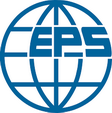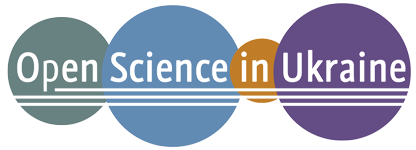Effect of thermochemical activation temperature on electrical conductivity and concentration of charge carriers in the obtained porous carbon materials
DOI:
https://doi.org/10.15330/pcss.25.4.853-862Keywords:
nanoporous carbon material, low-temperature porometry, electrical conductivity, impedance spectroscopy, Mott-Schottky model, space chargeAbstract
By changing the temperature of chemical activation of plant biomass, nanoporous carbon materials with a specific surface area of up to 1050 m2/g were obtained. The obtained carbon materials were used to form composites with different percentages of conductive additive. Electrochemical impedance spectroscopy was used to investigate the physicochemical processes occurring at the carbon electrode/electrolyte interface in a 30% aqueous KOH solution.
The concentration of charge carriers in the obtained carbon materials was determined, the values of which are in the range of 6·1018 – 35·1018 cm-3, and its dependence on the temperature of thermochemical activation was established. It was established that an increase in the temperature of thermochemical activation from 600 ºС to 900 ºС leads to an increase in the capacity of the space charge region by almost 10 times. The formation of nanoporous carbon material/conductive additive composites contributes to the correlation between the values of specific capacitance and electrical resistance for the studied materials.
References
A. Barroso-Bogeat, M. Alexandre-Franco, C. Fernández-González, A. Macías-García, V. Gómez-Serrano, Temperature dependence of the electrical conductivity of activated carbons prepared from vine shoots by physical and chemical activation methods, Microporous and Mesoporous Materials, 209, 90 (2015); https://doi.org/10.1016/j.micromeso.2014.07.023.
H. Marsh, F. Rodriguez-Reinoso, Activated Carbon (Elsevier Science & Technology Books, 2006)
M. Olivares-Marín, J.A. Fernández, M.J. Lázaro, C. Fernández-González, A. Macías-García, V. Gómez-Serrano, F. Stoeckli, T.A. Centeno, Cherry stones as precursor of activated carbons for supercapacitors, Materials Chemistry and Physics, 114, 323 (2009); https://doi.org/10.1016/j.matchemphys.2008.09.010.
S.-V. Sklepova, N. Ivanichok, P. Kolkovskyi, ... M. Bembenek, L. Ropyak, Porous Structure and Fractal Dimensions of Activated Carbon Prepared from Waste Coffee Grounds, Materials, 16, 6127 (2023); https://doi.org/10.3390/ma16186127.
J.M. Dias, M.C.M. Alvim-Ferraz, M.F. Almeida, J. Rivera-Utrilla, M. Sánchez-Polo, Waste materials for activated carbon preparation and its use in aqueous-phase treatment: A review, Journal of Environmental Management, 85, 833 (2007); https://doi.org/10.1016/j.jenvman.2007.07.0.
S.K. Sriramoju, P.S. Dash, S. Majumdar, Meso-porous Activated Carbon from Lignite Waste and its Application in Methylene Blue Adsorption and Coke Plant Effluent Treatment, Journal of Environmental Chemical Engineering, 9, 104784 (2020); https://doi.org/10.1016/j.jece.2020.104784.
N.Ya. Ivanichok, O.M. Ivanichok, B.I. Rachiy, P.I. Kolkovskyi, I.M. Budzulyak, V.O. Kotsyubynsky, V.M. Boychuk, L.Z. Khrushch, Effect of the carbonization temperature of plant biomass on the structure, surface condition and electrical conductive properties of carbon nanoporous material, Journal of physical studies, 25, 3801 (2021); https://doi.org/10.30970/jps.25.3801.
B.K. Ostafiychuk, N.Y. Ivanichok, S.-V. Sklepova, O.M. Ivanichok, V.O. Kotsyubynsky, P.I. Kolkovskyy, I.M. Budzulyak, R.P. Lisovskiy, Influence of plant biomass activation conditions on the structure and electrochemical properties of nanoporous carbon material, Materials Today: Proceedings, 62, 5712 (2022); https://doi.org/10.1016/j.matpr.2022.01.486.
Global coffee market trends – 2024: consumers choose quality. – Electron. text. data.: access mode.: https://gemini.ua/trendi-globalnogo-kavovogo-rinku-2024-spozhivachi-obirayut-yakist/.
Ukraine buys coffee: TOP–5 countries from which it is brought. – Electron. text. data.: access mode.: https://economics.segodnya.ua/ua/economics/enews.html.
A. Vitiuk, A. Zalievska, Analysis of the development of the coffee beverages market in Ukraine, Innovation and Sustainability, 4, 72 (2023); https://doi.org/10.31649/ins.2023.4.72.80.
Mussatto, Solange I.; Carneiro, Livia M.; Silva, João P.A.; Roberto, Inês C.; Teixeira, José A. (January 2011). A study on chemical constituents and sugars extraction from spent coffee grounds. Carbohydrate Polymers. 83 (2): 368 (2011); https://doi.org/10.1016/j.carbpol.2010.07.063.
Josiah McNutt, Quan (Sophia) He, Spent coffee grounds: A review on current utilization, Journal of Industrial and Engineering Chemistry, 71, 78 (2019); https://doi.org/10.1016/j.jiec.2018.11.054.
Lina F. Ballesteros, José A. Teixeira, Solange I. Mussatto, Chemical, Functional, and Structural Properties of Spent Coffee Grounds and Coffee Silverskin, Food and Bioprocess Technology, 7, 3493 (2014); https://doi.org/10.1007/s11947-014-1349-z.
S-V.S. Sklepova, I.M. Gasyuk, N.Ya. Ivanichok, P.I. Kolkovskyi, V.O. Kotsyubynsky, B.I. Rachiy, The porous structure of activated carbon-based on waste coffee grounds, Physics and Chemistry of Solid State, 23, 484 (2022); https://doi.org/10.15330/pcss.23.3.484-490.
S. Brunauer, P.H. Emmett, E. Teller, Adsorption of Gases in Multimolecular Layers. Journal of the American Chemical Society, 60, 309 (1938); http://dx.doi.org/10.1021/ja01269a023.
B. Lippens, J.H. de Boer, Studies on pore systems in catalysts V. The t method, Journal of Catalysis, 4, 319 (1965); https://doi.org/10.1016/0021-9517(65)90307-6.
M. Thommes, K. Kaneko, A.V. Neimark, J.P. Olivier, R. Francisco, J. Rouquerol, K.S.W. Sing, Physisorption of gases, with special reference to the evaluation of surface area and pore size distribution (IUPAC Technical Report), Pure and Applied Chemistry, 87, 1051 (2015); https://doi.org/10.1515/pac-2014-1117.
Jaclyn D. Wiggins-Camacho, Keith J. Stevenson, Effect of nitrogen concentration on capacitance, density of states, electronic conductivity, and morphology of N-doped carbon nanotube electrodes,The Journal of Physical Chemistry C, 113, 19082 (2009); https://doi.org/10.1021/jp907160v.
Alberto Adán-Más, Teresa M. Silva, Liliane Guerlou-Demourgues, Maria Fátima Montemor, Application of the Mott-Schottky model to select potentials for EIS studies on electrodes for electrochemical charge storage, Electrochimica Acta, 289, 47 (2018); https://doi.org/10.1016/j.electacta.2018.08.077.
A.I. Kachmar, V.M. Boichuk, I.M. Budzulyak, V.O. Kotsyubynsky, B.I. Rachiy, R.P. Lisovskiy, Effect of synthesis conditions on the morphological and electrochemical properties of nitrogen-doped porous carbon materials, Fullerenes Nanotubes and Carbon Nanostructures, 27, 669 (2019); https://doi.org/10.1080/1536383X.2019.1618840.
John O’M. Bockris, Amulya K. N. Reddy, Maria Gamboa-Aldeco, Modern Electrochemistry 2A. Fundamentals of Electrodics (Springer New York, NY. Springer-Verlag US, 2000); https://doi.org/10.1007/b113922.
Allen J. Bard, Larry R. Faulkner, Electrochemical Methods: Fundamentals and Applications, 2nd Edition (Wiley & Sons, 2000).
B.P. Bahmatyuk, A.S. Kurepa, I.I. Grygorchak, Impedance Spectroscopy Of Supercapacitors Based On Nanoporous Activated Carbon Material, Journal of National University “Lvivska Politechnika”, 687, 188 (2010); https://ena.lpnu.ua:8443/server/api/core/bitstreams/16a0e7cd-47e7-4821-a434-bb517987d1c4/content.
B.E. Conway, Electrochemical supercapacitors. Scentific fundamentals and tehnological applications (New York: Kluwer Academic Plenum Publishers, 1999).
M. Itagaki, S. Suzuki, I. Shitanda, K. Watanabe, H. Nakazawa, Impedance analysis on electric double layer capacitor with transmission line model, Journal of Power Sources, 161, 415 (2007); https://doi.org/10.1016/j.jpowsour.2006.09.07.
I.I. Hryhorchak, Molecular energy storage: basic principles and new directions of technologies, Herald of the Carpathian University, Mathematics. Physics, 1, 170 (2000).
Downloads
Published
How to Cite
Issue
Section
License
Copyright (c) 2024 B.I. Rachiy, N.Ya. Ivanichok, V.V. Moklyak, P.I. Kolkovskyi, O.I. Bulbuk, A.M. Soltys, D.S. Borchuk, L.Z. Khrushch

This work is licensed under a Creative Commons Attribution 3.0 Unported License.









